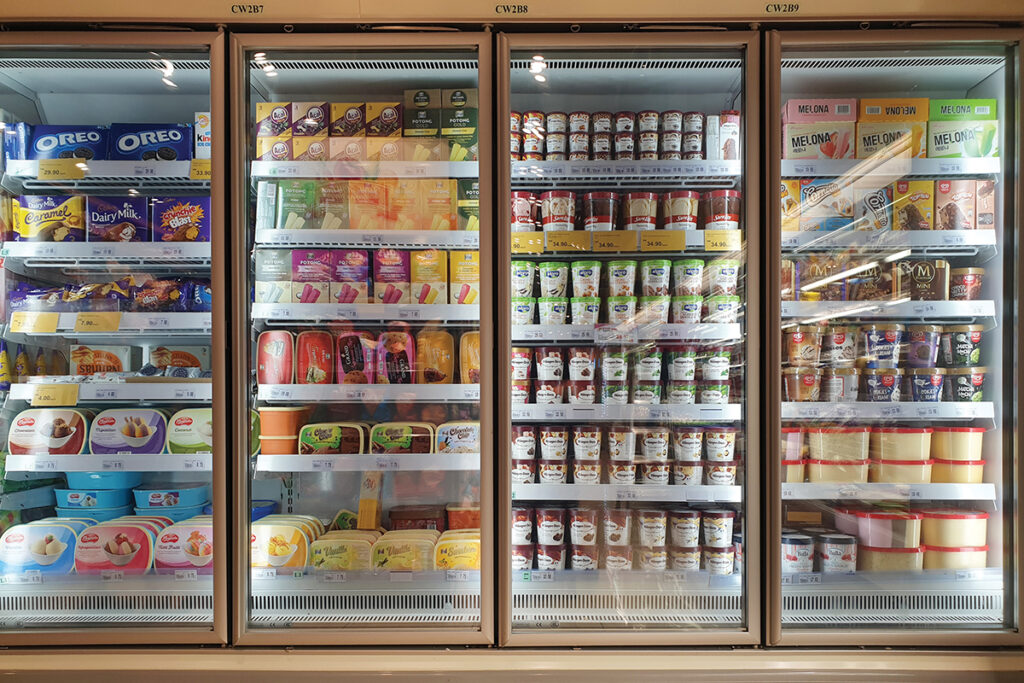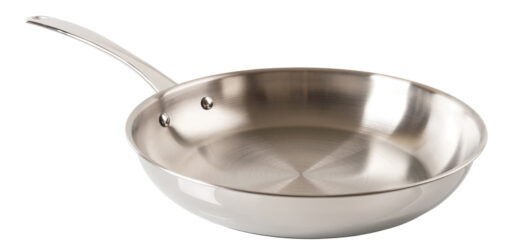Mad about Science: Refrigeration
By Brenden Bobby
Reader Staff
Nothing says summer like a chilled slice of watermelon and a cold beverage on a balmy day at the beach. Have you ever thought about what it takes to cool down your food or the room in which you’re chilling? How does an enclosed space keep away the summer heat?
Cooling systems run on the principle of phase transitions. Refrigerant exists as a low-pressure gas within the guts of your refrigerator. So long as there isn’t a leak, the refrigerants — hydrofluorocarbons or synthetic gases — will never touch your food. The HFCs are pulled into a compressor, where they heat up and are then moved into a condenser on the outside of your fridge. 
They cool down within the condenser, which transfers heat into the surrounding air. The refrigerant passes through an expansion valve that reduces its pressure, then enters an evaporator where it absorbs the heat from inside of your fridge. Then the cycle starts all over again.
This is how virtually all artificial cooling works for residential and commercial applications. Similar principles are applied to industrial cooling, but the methods vary based on the scale of the industrial project.
Essentially, all heating and cooling comes down to this: Push matter together to make it hot, pull matter apart to make it cool down.
The real tricky part to all of this is the power consumption involved in cooling. You can regulate the space inside of your home, but that heat is still going somewhere. A refrigerator is spitting heat from the back, an HVAC system is spitting air outside and, somewhere along the line, a generator producing the energy to power your cooling is generating heat by generating energy. In most cases, this heat can and does dissipate into the atmosphere where the natural processes of the Earth will deal with it at scale. It becomes more complicated when you begin factoring in wasted HFCs that leak from faulty or discarded equipment that add to changing atmospheric conditions.
We’ve explored greenhouse gases in the past. The idea in its simplest form is that certain chemicals like carbon dioxide and methane are good at letting light through but not letting out heat. It’s the same principle as throwing a clear painter’s tarp over your garden bed over the winter: You’re allowing sunlight to pass through, strike the ground and generate heat which then becomes trapped beneath the tarp. Great for your plants, bad for your planet.
Refrigerants are a centuries’ old solution for the heat cycle, but their long-term environmental impacts are becoming difficult to ignore. There are billions of refrigerators and HVAC systems around the world — how many of them are leaking or set to be replaced within the next few months or years?
Alternative cooling solutions are being explored by scientists around the world using the same principles as traditional cooling but different materials and applications. Magnetocaloric cooling has been explored as an alternative to refrigerant cooling since at least the 1970s. This is a cooling system using a rotational magnet chamber that excites cells of magnetically sensitive metals suspended within chambers. As the magnet passes over this metal dust it excites the metal and generates heat, which is transferred to the next cell as the magnet moves toward it. This allows the first cell to cool down as the energy and heat is pulled from it and transferred to the next chamber.
This can be applied to coolers and refrigerators as the heat is drawn from the interior and released into the ambient air without the need for synthetic gases. Magnetocaloric cooling is currently being explored in Germany for use in vending machines and other commercial applications. Until recently, this was a very expensive cooling method, and although extremely reliable, wasn’t financially sustainable for home use. Earlier iterations of magnetocaloric cooling utilized gadolinium as the magnetized particulate, but more recent innovations have shown a reduction in cost and increase in efficiency by using lithium iron selenium or LiFeSe. This compound is often used in rechargeable batteries as well.
On the residential front, another innovative technology could soon replace HFCs. Elastocaloric cooling is being explored by the U.S. Department of Energy and the Ames Laboratory. This uses another phase transitioning material to absorb heat and release it as it changes form. Unlike the liquid to gas transition of HFCs, elastocaloric materials are more like wires that have elastic properties. They are mechanically agitated and bent into shapes to generate and store heat, then spring back into a straightened shape to spontaneously release it. These are generally synthetic polymers that are less likely to be exposed to the atmosphere than HFCs, but they come with a major drawback.
Any object that is subjected to mechanical pressures and contortion will wear out over time. The lifespan of elastocaloric materials is a major concern; however, it is highly dependent on its role in the heat cycle, and how easy it could be to replace. If it’s as simple as replacing and recycling a cartridge in the back of your fridge, it could quickly become an exciting alternative to a cooling system that has been in use for over two centuries.
Stay curious, 7B.











 Coming up this week! Don’t miss Live Music, the Summer Sampler, the Art Party, Monarch Grind, the Sandpoint Renaissance Faire, and more! See the full list of events in the
Coming up this week! Don’t miss Live Music, the Summer Sampler, the Art Party, Monarch Grind, the Sandpoint Renaissance Faire, and more! See the full list of events in the 